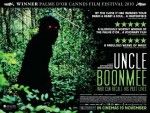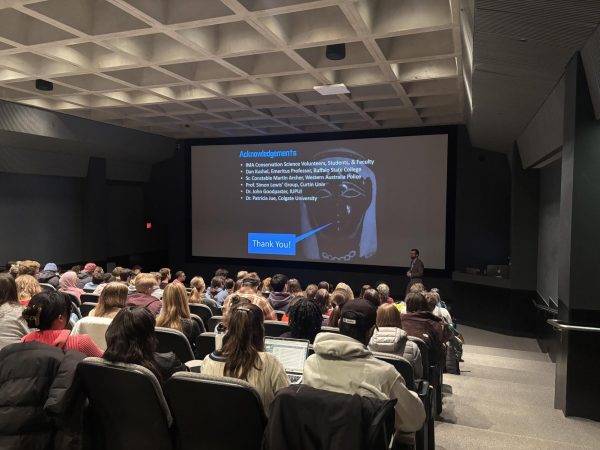This Week at the Movies: Uncle Boonmee Who Can Recall His Past Lives

Uncle Boonmee Who Can Recall His Past Lives starts with with a beautiful quotation whose origin I can, appropriately, not find. On a black screen, in Thai, it reads, “Facing the jungle, the hills and vales, my past lives as an animal and other beings rise up before me,” after which the screen cuts to a silhouetted water buffalo tied to a tree framed against the lush, green Thai wilderness. It pulls itself free, journeys to the forest and begins to feed upon the abundant foliage, whereupon he is retrieved by the man who lost him, a simple farmer dressed with a few pieces of cloth. As they leave, we are introduced by a long take to a pitch-black creature with glowing red eyes who stands draped in wilderness. The film then cuts to the title, after which we are first introduced to the film’s primary characters, driving through their small, underdeveloped – yet not squalid – region in Thailand.
Uncle Boonmee leads a fairly typical modern existence, with troubles and pleasures like we all have on some level. He has, however, by the time we first meet him, developed severe kidney disease and needs to be treated for it daily by a Laotian, Jaai. He stands at the end of his life in the country with those whom he loves today, Jen and Thong, and is soon reunited with his long dead wife, as a ghost, and his long lost son, as a black haired “monkey ghost” with bright red eyes who still retains his human voice. They all meet while eating dinner, chatting as families do. It is this strange, almost ineffable superposition of the spiritual and magical on the supremely mundane which drives Uncle Boonmee artistically.
Some central themes of the film include life, death, the afterlife and nature, all of which are extremely weighty concepts, and all of which have been explored time and time again. However, Apichatpong Weerasethakul, the director of the film, never provides the viewer easy or concrete answers. Much praise has been directed at the film’s ineffability, porousness and resultant beauty, and I agree. The most apt word I can apply to the film is phantasmagoria, an eighteenth and nineteenth century type of European entertainment used to display a sequence of phantasms, or dream-like images, onto smoke or a wall, which, today has taken on less material context. The film weaves in and out of scenes depicting the realities of Boonmee’s illness (including one scene in which for three mostly wordless minutes we merely watch Jaai dress Boonmee in preparation for his dialysis), discussion of how his son becomes one with the monkey ghosts, description of the afterlife by a woman nineteen years dead and Boonmee and Jen tending to his bee farm. The film allows for such variety by retaining a core of spiritualism and naturalism. To Weerasethakul, nature deserves our deepest respect, even though it is easy to forget that it birthed us.
Uncle Boonmee Who Can Recall His Past Lives silhouettes us against the jungle which stands tall behind us. It takes the life of an unextraordinary man at the end of his life, for in the end we are all unextraordinary and temporary, and simultaneously exalts and negates him. He is the water buffalo stealing away to eat the fruit of the abundant forest. He, like us, is short, ugly, dying and always falling out of and rushing into the world, regardless of form.
Contact Eric Reimund at
ereimund@colgate.edu.




